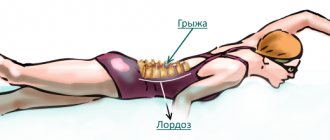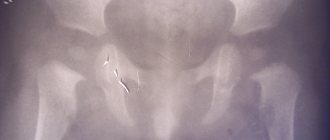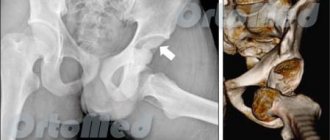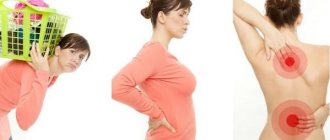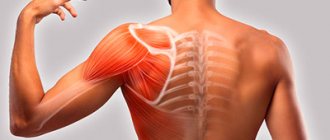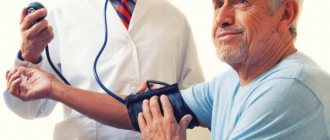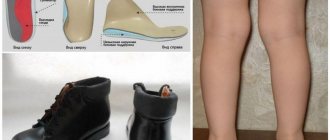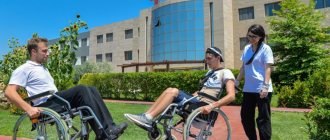What improves and straightens posture
Active lifestyle and moderate physical activity
In other words, there is no physical inactivity. Our body is designed for physical labor and to move. If we don't use certain muscles, they will atrophy over time. Sitting does nothing to strengthen your back or core muscles. The more active and varied your physical activities, the better. Walking, running, swimming, skiing, yoga, gym - strengthen different muscle groups. Therefore, it would be good to combine them and not get stuck in one thing.
It is also important to remember that the loads should be moderate. This means that you don’t need to work out in the gym 2-3 times a week until you lose consciousness. If the load is too great for the body, it will have the opposite effect. The spine will suffer, and with it the posture.
It is important to choose the right orthopedic mattress and pillow
Especially if you already have problems with the spine, pain, osteochondrosis, scoliosis or hernia. At night, our body must recover. We spend 25-30% of our lives sleeping in a horizontal position. Therefore, the bed, mattress, pillow, textiles, air in the room is of great importance for recovery.
An incorrectly selected mattress and pillow height can cause muscle tension and pinched nerve roots.
Ergonomic workplace
This means that the table and chair should be selected according to your height. If this is a child, then the table and chair must be of adjustable height while the child grows. Very often, after a sedentary lifestyle, the next reason why posture becomes distorted is the incorrect table height at school and at home. The child is forced to adapt, so the load will be greater on some muscles and less on others. During active growth during adolescence, muscles and bones have not yet had time to become sufficiently strong, so they are more susceptible to changes.
It is also important to choose the right shoes. Wearing high heels for a long time can negatively affect your posture. Heels shift the center of gravity of the body, because of this the lumbar deflection increases, and the muscles are under tension for a long time. If you like to wear heels, then be sure to do gymnastics to relieve stress from your feet and exercises against varicose veins.
What are postural disorders?
Depending on the causes of poor posture, deformities may manifest themselves in different ways. The most common disabilities affecting children are:
- Slouch. In this case, there is a flattening of the internal curve of the lower back and an increase in kyphosis of the thoracic region. The child seems to form a hump in the area of the shoulders and shoulder blades;
- Flat back. It is characterized by minimization and, in later stages, almost complete elimination of spinal curvatures. In this position, a large load is placed on the spine, it ceases to absorb shock, which leads to intervertebral hernia and joint diseases;
- Round back. Changes in thoracic kyphosis that do not affect the lumbar region. A round back often precedes a stoop;
- Scoliosis. The most dangerous disease associated with improper posture. With it, a lateral deformation of the spine is observed, as a result of which the child’s shoulders and shoulder blades are located at different levels. If left untreated, scoliosis rapidly progresses and in later stages provokes spinal deviations in the frontal plane, as a result of which, in addition to scoliosis itself, a child can develop any of the above forms of spinal deformity.
Why does my posture become crooked?
There are several assumptions on this topic, but modern doctors do not give a definite answer.
Reasons that can lead to incorrect posture:
- Sedentary lifestyle;
- Insufficiently strong back and core muscles (how to strengthen the back and abdominal muscles);
- Improperly organized workplace (incorrect table and chair height);
- Using uncomfortable shoes;
- Flat feet;
- The presence of congenital pathologies (rickets);
- Overweight;
- Chronic stress.
All these factors together or their combinations lead to curvature of posture.
Why is posture so important anyway? And what are the consequences of poor posture?
Slouch
Leads to rounding of the shoulders and tilting the head forward. Due to this, the neck muscles are greatly overstrained, the chest in front is compressed, the volume of the lungs becomes smaller, and the movement of the diaphragm occurs at a reduced amplitude. If you don’t work with the stoop and don’t straighten your back, then over time this will lead to deformation of the internal organs of the chest.
Osteochondrosis and other spinal pathologies
Incorrect posture is usually a curvature of the spine, scoliosis. This means that the intervertebral discs suffer. A curved spine puts pressure on discs and nerve roots. They cannot function fully, causing pain. It is not known exactly what is the root cause - incorrect posture, which causes scoliosis, or scoliosis, which forms incorrect posture. In any case, the back muscles need to be strengthened and stretched, removing muscle tension.
Changes in the functioning of internal organs
A curved spine over time deforms the internal organs and the position of the pelvis. A crooked pelvis results in different leg lengths (one appears shorter than the other) and different loads on the right and left sides. Over time, this affects the condition of the joints and bones. Internal organs are also deformed. They may shift slightly due to body asymmetry. This leads to a deterioration in their performance.
General description of the pathology
According to statistics, this disease is extremely common. The percentage of cases increases as people get older. If in children under three years of age the pathology is diagnosed in only 2%, then in preschool and school age more than 33% of children already suffer from it, and among adolescents the disease is diagnosed in 67% of cases.
Pathology requires timely correction. Source: Poor posture in children of primary school age. Methods for the prevention and correction of poor posture using physical education. Gorbunova T.A. Innovative science, 2021. The health of the child as a whole depends on the correct formation of skeletal structures. Incorrect development provokes an uneven distribution of load, due to which pressure on the joints increases, bones are displaced, pathologies of internal organs occur, and malfunctions in the functioning of the nervous, respiratory, and cardiovascular systems appear. Complications include scoliosis, osteochondrosis, intervertebral hernia and other dangerous abnormalities.
How to correct posture in a teenager - the best exercises
Tadasana against the wall
- Stand with your back to the wall, keep your feet together
- Press your heels, buttocks, shoulder blades and the back of your head against the wall
- Pull your shoulders back towards the wall, you should press them. At this moment, you will feel how your chest in front expands, a space appears between your collarbones
- The arms are lowered down, the palms are facing the hips, the little fingers are touching the wall. With your middle fingers, reach towards the floor and pull your shoulders down
- Stand like this for 5-7 minutes
Tadasana against the wall with arms raised
- Stand with your back to the wall, press your heels to the floor, buttocks, shoulder blades and the back of your head to the wall
- Raise your arms until they are parallel to the floor, interlace your hands tightly, turn the lock out and raise your arms up. Touch the wall with your little fingers
- Do not arch your lower back and point your lower back towards the wall
- Stretch with the bases of your palms up, pressing your heels to the floor
- Stay in the pose for 1 minute
- Change the grip of the fingers in the lock and perform again for another 1 minute
Cat Pose
- This pose relieves slouching and stretches the distance between the vertebrae, stretches the back muscles and relieves tension from them.
- Get down on the floor, place your palms under your shoulders and your knees under your hip joints, pelvis-width apart.
- As you inhale, bend over, move your shoulders back, lift your chin
- As you exhale, arch your back, curl your tailbone, and bring your chin toward your sternum.
- Repeat 20 times
Twisting on a chair
- Sit on a chair with your right side to the back, pressing your heels firmly to the floor
- Press your sit bones into the seat of the chair, move your shoulders back and down, and retract your shoulder blades
- As you inhale, stretch up, raise your arms, lengthen your spine
- As you exhale, turn to the right, place your palms on the back of the chair, and place your chin behind your shoulder.
- With your right hand, pull the back of the chair toward you, and with your left, away from you. Lower your shoulders down, lift your elbows up
- Stay in the pose for 30 seconds
- Repeat on the other side
Locust Pose
- Lie on the floor on your stomach, extend your arms along your body, forehead on the floor
- As you inhale, lift your body, head and legs as high as possible
- As you exhale, lower yourself down
- Repeat 3 sets of 15 times
Walking with a book
Take a book and stand up straight. Place the book on your head so that it lies without your hands.
Start moving slowly around the apartment with a book on your head.
This exercise is good because it straightens your posture while walking. We can do all kinds of exercises, stand correctly against the wall. But as soon as you walk, your entire posture may shift. The book won't allow that. The muscles will be trained while walking, and not while static.
You can also sit with a book at the computer or while watching TV.
When the book is on your head, your skull is in the correct position relative to your body. In the normal position, the head moves a little forward, this creates tension in the neck muscles, and the upper back is rounded. In the correct position, the back of the head and shoulder blades should be in line. This is clearly noticeable when you stand with your back to the wall.
Prevention measures
Prevention of conditions caused by poor posture can be divided into two types:
prevention for adults; measures for children.
Poor posture in adulthood can be corrected if you stop leading a sedentary lifestyle. It is worth developing physical activity that will be feasible in accordance with age indicators. Walking and jogging, swimming, walking, Norwegian walking, gymnastics, and, if the joints are well prepared and there are no contraindications, yoga are recommended. With a predominantly sedentary lifestyle and work, it is recommended to get up from a chair or armchair every 40-60 minutes and do simple exercises or at least just walk.
To prevent postural disorders, it is recommended to perform sets of special exercises to strengthen the muscular corset and spinal muscles.
Don't be indifferent to your figure. It is necessary, at the level of a subconscious rule, to constantly monitor your body position while sitting or standing, excluding postural violations. This will help you avoid slouching and maintain the natural curves of your spine. If you have excess weight, then you need to get rid of it. Self-control, which you can develop on your own, will also help with this. It will help you stick to a diet based on healthy eating principles.
At the everyday level, you should avoid lifting weights or distribute them evenly in both hands when carrying them, select physiological furniture, use insoles in shoes for flat feet (to relieve the load on the spine), observe occupational hygiene, do not wear uncomfortable clothes and shoes, and eat well.
Prevention of factors leading to poor posture in children is simple. In fact, it is easy to put into practice. Following the recommendations will help avoid the need for long-term, complex treatment and correction of the spinal column using orthopedic products.
To form physiological, correct posture, it is important to observe:
— physical activity; - correct, symmetrical position of the body when sitting; — wearing properly selected shoes, orthopedic ones if necessary; - wearing clothes that do not restrict movement; — principles of good nutrition with sufficient amounts of proteins, calcium, vitamins and minerals; - schedule; - alternating between activity and proper rest.
Treat congenital abnormalities of posture, skeletal injuries and their consequences in a timely manner.
Choose furniture for your child on which it will be convenient for him to do his homework without spoiling his posture. Make sure his desk is well lit. The child should sleep on an orthopedic mattress. Grandma's feather beds contribute to poor posture.
Don't overfeed your baby. Monitor his diet. Deviations from the norm should not be allowed. Today it is so easy for children and teenagers to become overweight. The abundance of sweets, fast food, and unhealthy semi-finished products on family tables contributes to an increase in body weight and, as a result, an increased impact load on the feet, spine, large joints of the legs, and curvature of posture.
Give your child or teen the opportunity to exercise. This could be a dance studio, a swimming pool, football, athletics. Do not limit his daily physical activity. Jumping rope, let him jump. He's racing down the street, let him run. If he wants rollerblades, let him rollerblade, and in winter he can skate and ski.
Dosed, full-fledged physical activity is an important, if not the most important, factor in preventing postural disorders. But it is not a panacea. If there are any suspicions or provoking factors, you should contact specialists for advice, diagnosis and possible treatment.
We do not claim any discoveries. Yes, these are standard recommendations for posture that our grandmothers and mothers still knew. But compliance with them preserves the child’s health. By following these recommendations, you can avoid the formation of incorrect, disturbed posture and the pathological changes in the body that it leads to.
Massage techniques
In case of postural disorders, all massage techniques are used - stroking, rubbing, kneading and vibration, but taking into account the condition of the soft tissues. It is necessary to use acupressure and segmental massage techniques, as well as post-isometric relaxation methods.
For example, in the case of spasms and shortening of muscles, they should be relaxed and stretched using classical massage techniques: stroking, rubbing, kneading, stable and labile gentle vibration of tense muscles, as well as segmental massage techniques, inhibitory acupressure techniques.
In order to activate weakened, stretched muscles, different options for stroking and rubbing, and more varied kneading techniques are used, which are carried out with great intensity. Squeezing is also used. Vibration techniques are introduced quite intensively, including rough vibration and impact techniques. Finally, acupressure is used using a toning technique.
It is necessary to carefully study the places of attachment of muscles to bones, the transition of muscles into tendons, and intermuscular spaces.

